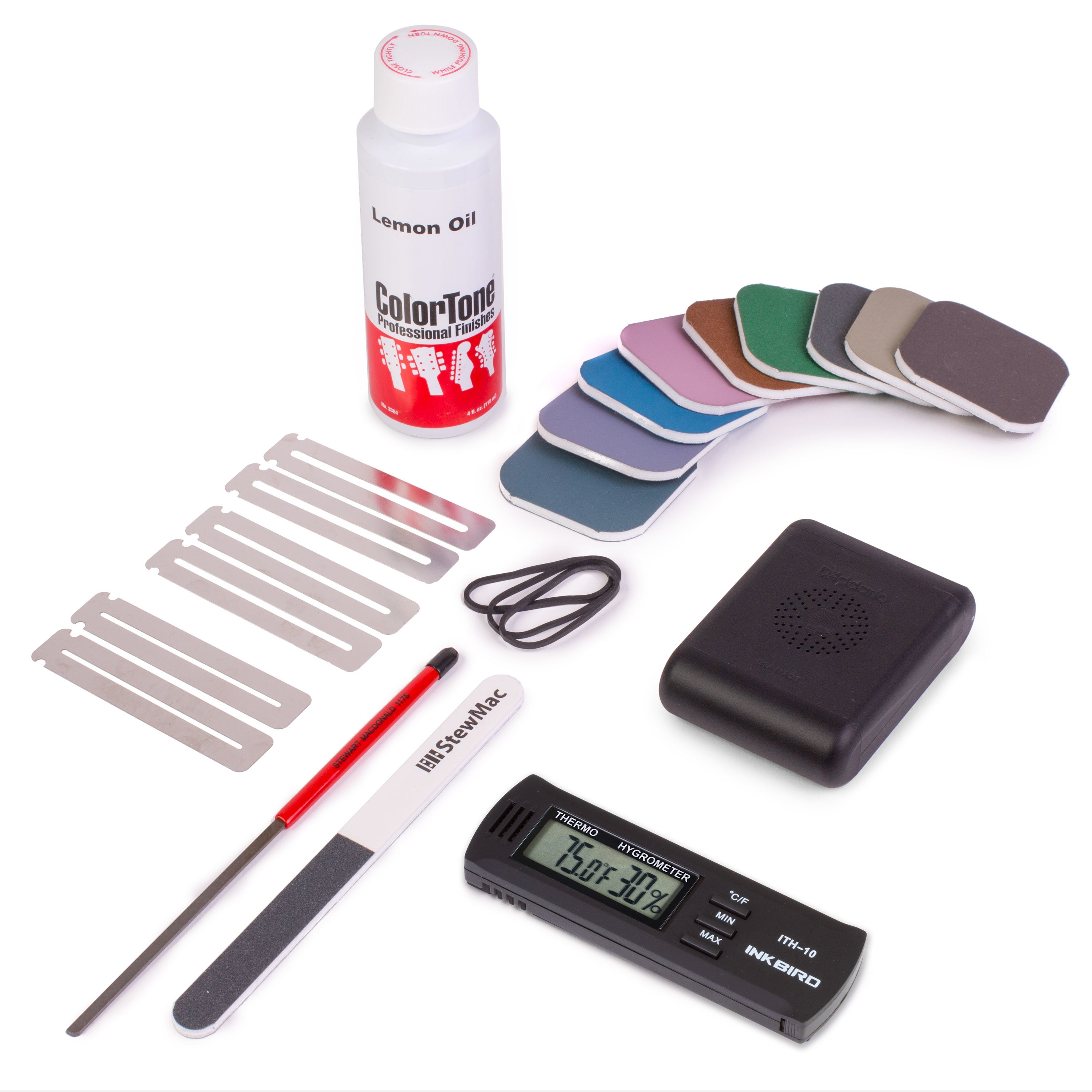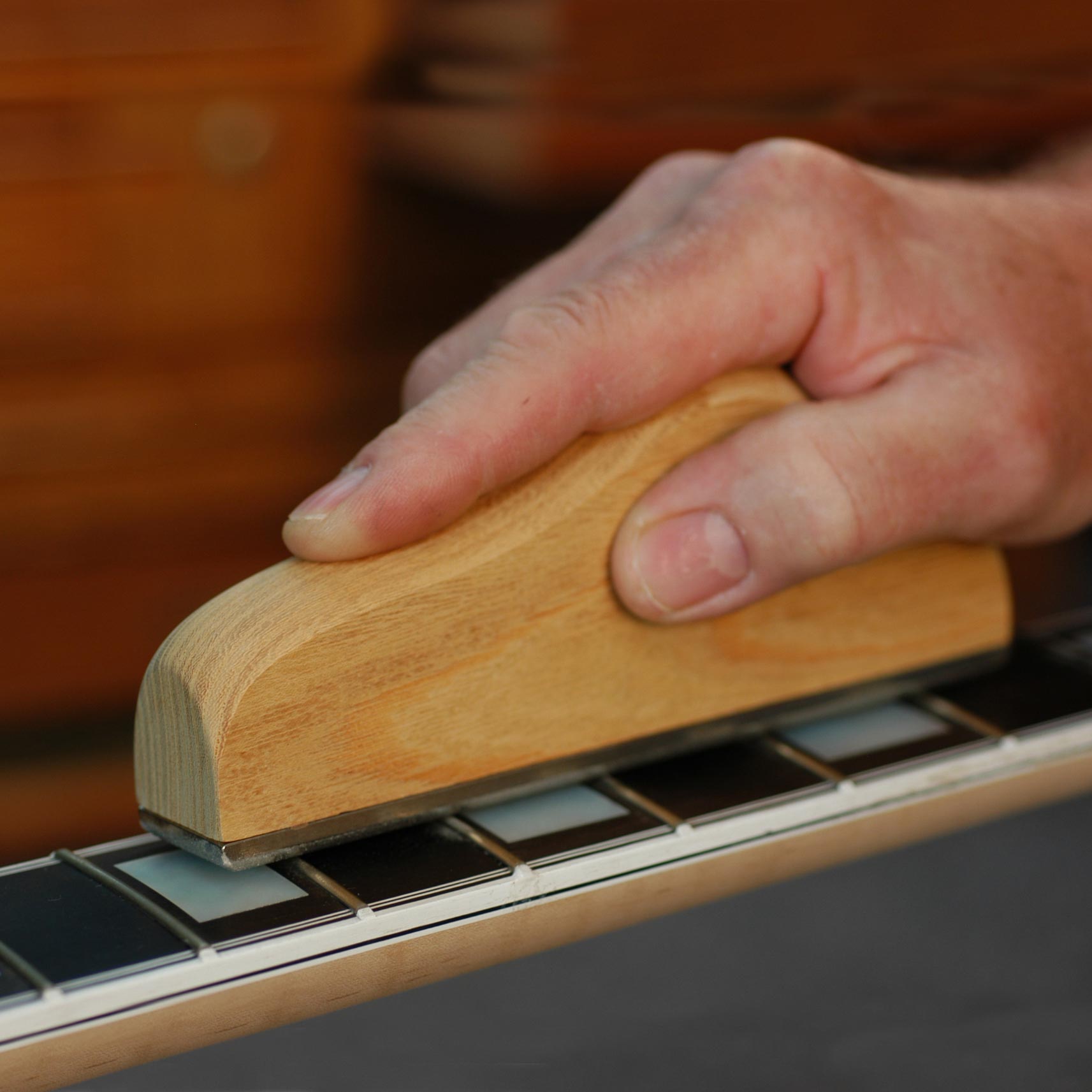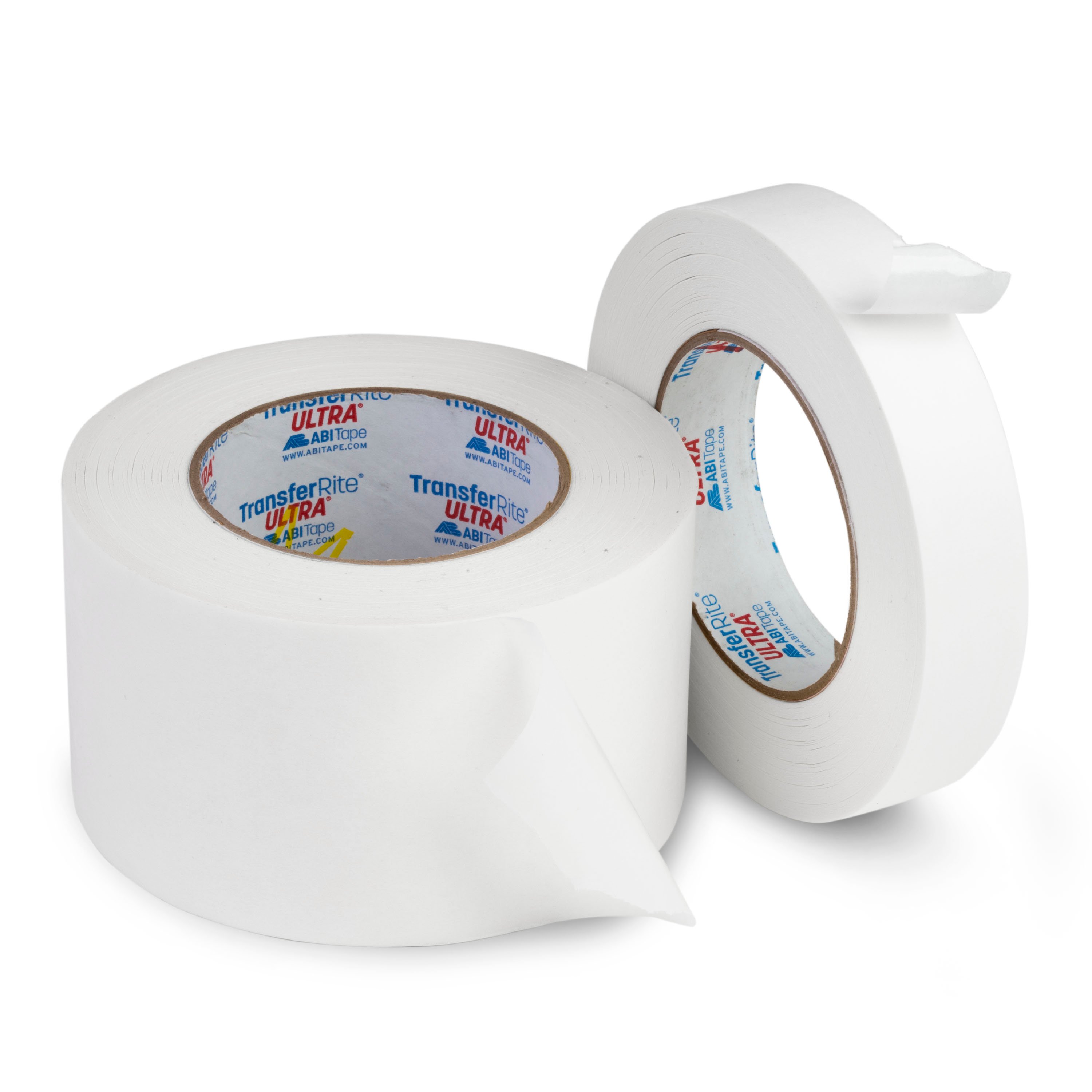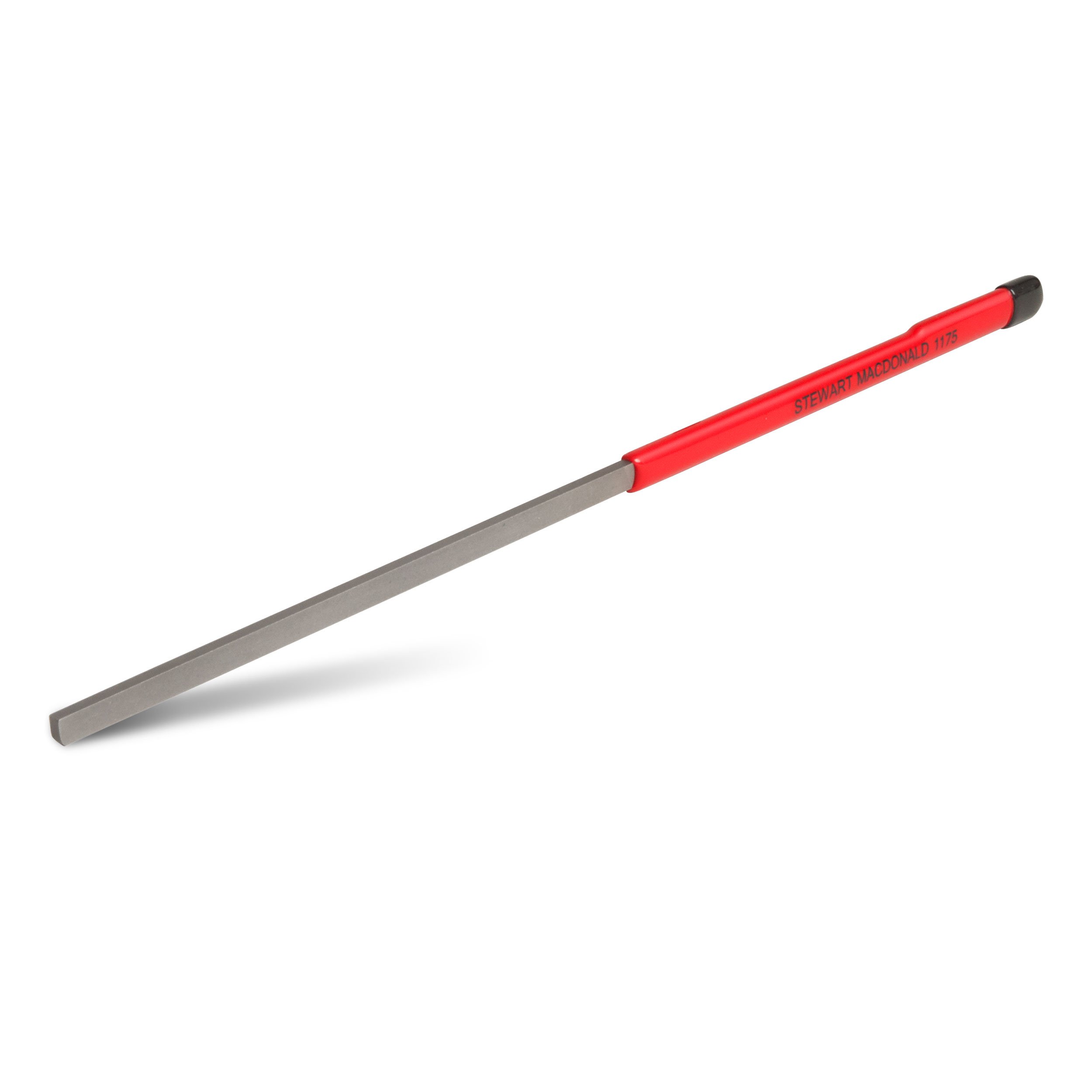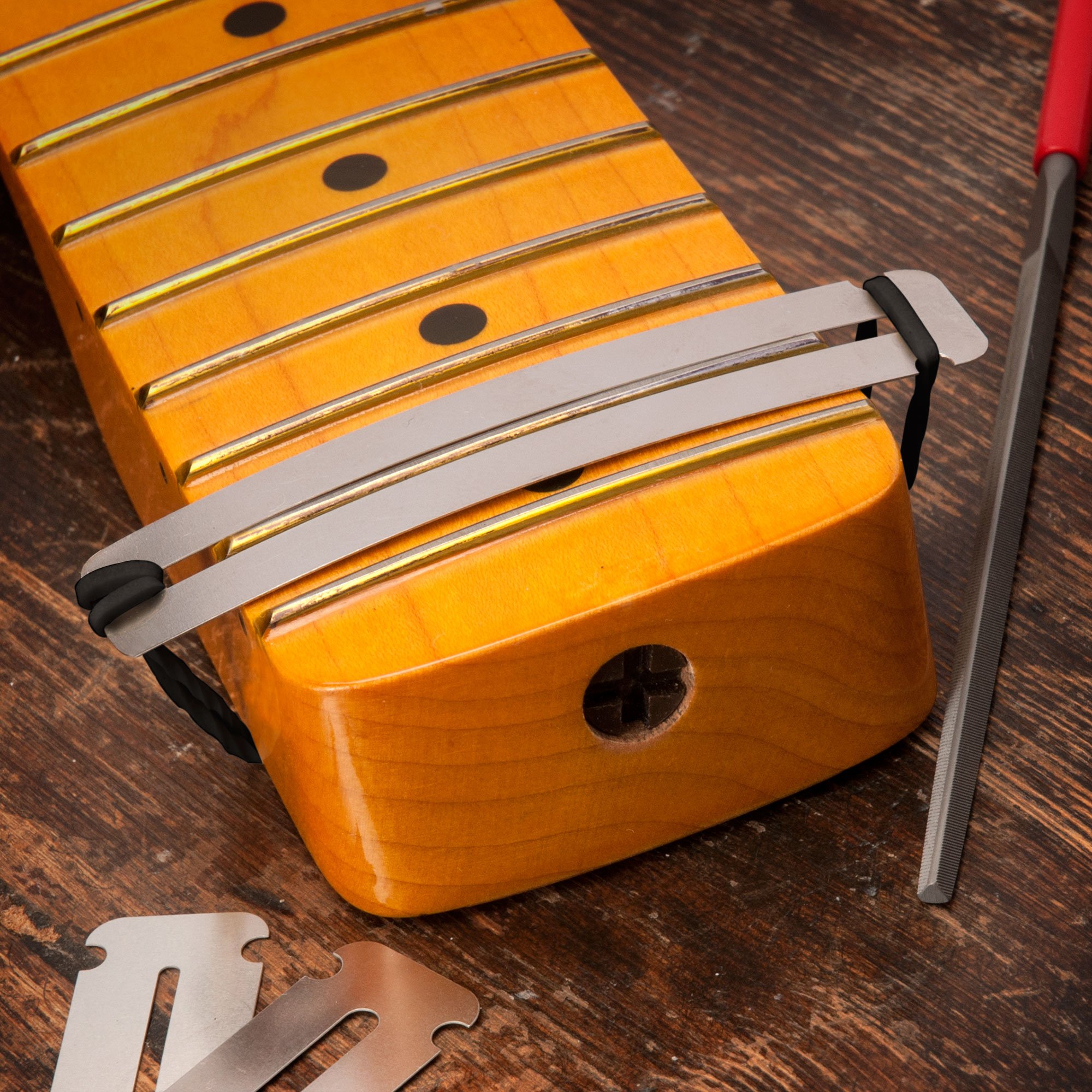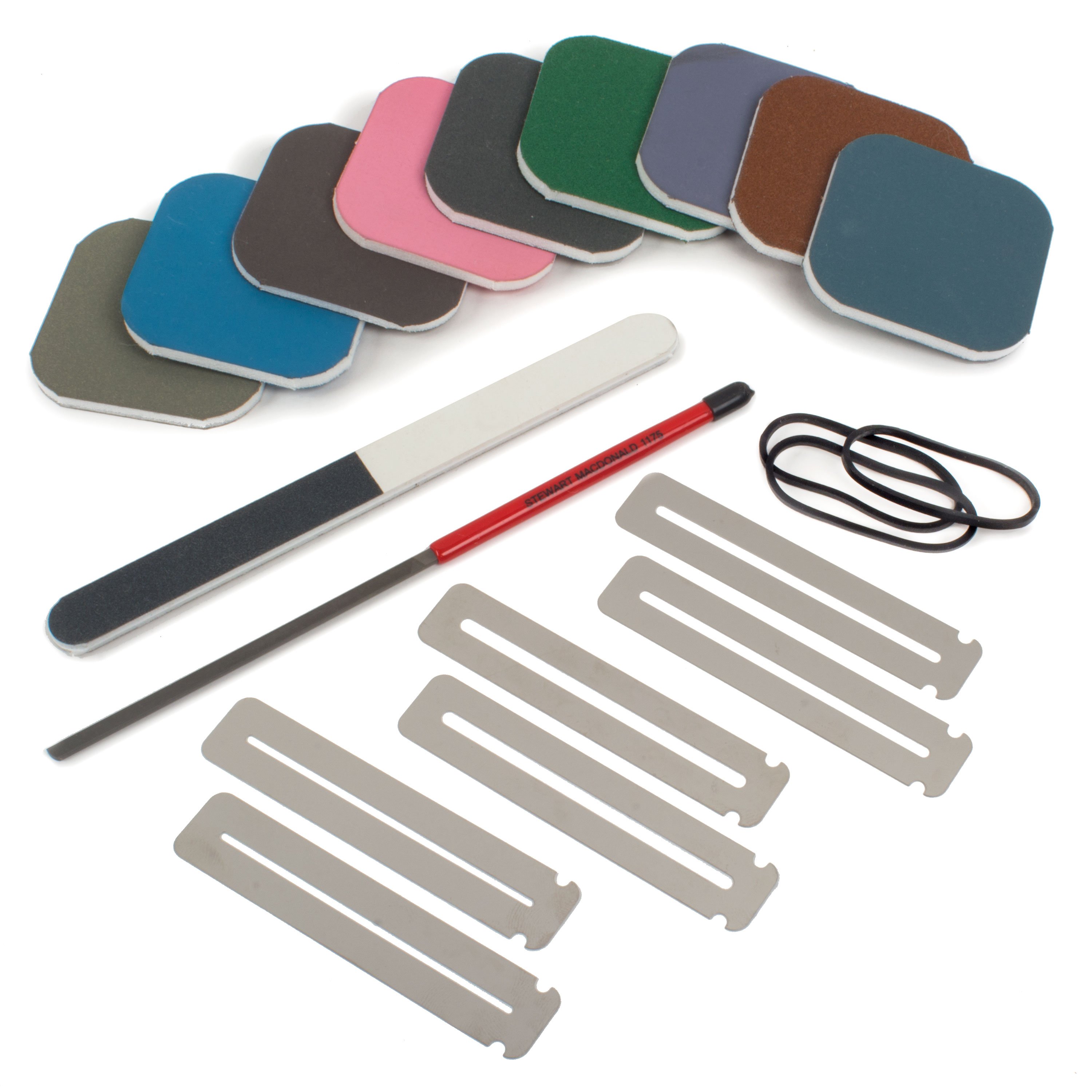How to make sharp fret ends smooth and comfortable
Issue 337 September 05, 2019
Low humidity can cause fret sprout. This is when sharp fret ends stick out past your fingerboard and make it uncomfortable to play. This video shows you the tools and techniques for dressing sharp fret ends to make your guitar comfortable to play again. With only a fret end dressing file and some Micro-Mesh pads, you can quickly and easily fix your sharp fret ends.
- With the right tools, sharp frets ends can be filed smooth and flush for comfortable play
- A case humidifier can help avoid fret sprout
- While you have your strings off and tools out, it’s a great time to clean your fingerboard

How to Deal with Sharp Fret Ends
Download the PDF to support StewMac Trade Secrets Video #337
Video Transcription
[on-screen text reads: How to Make Rough Fret Ends Smooth and Comfortable]
Low humidity is the cause of sharp fret ends
Dan Erlewine: If you and your guitar live in a dry environment, like now when fall is coming on and we're turning the heater on, remember that wood dries out. If you don't have humidification in your house, let's say between 40 and 50 percent relative humidity, the first thing you'll notice on your guitar will be fret ends sticking out from the edge of the fretboard. The fretboard shrinks a little bit and the metal doesn't. These jagged fret ends are not only uncomfortable when you're sliding up the neck, they can actually cut you. Watch when I take this wooden dowel and drag it along the sharp edges of these frets. See the wood coming off? It's like little razor blades all up and down. That could be your skin. You can take care of this problem yourself with a few simple tools and, I'll show you how. SUBSCRIBE NOW for more great videos like this. Before I go any further, if you like video content about guitar setup and repair, subscribe to our YouTube channel.
How to use a Fret End Dressing File
So, now I'm going to take care of these fret ends. I'm going to knock off the edges of them where they're sharp, poking it down to make sure that the butt end of the fret is flush to the wood. Then, I'm going round them off and dress them so they're smooth, good looking and comfortable. And, I'm going to do this with the Fret End Dressing File. It's got two sides with teeth on them; the two flat sides. The other thin edges don't. One is flat and sharp; the other is very round and smooth. You use the sharp side on the bottom to nip off any little burrs created by the initial down stroke. The other side has a safe, round edge. If you hit the wood, you're not going to cut it. It's perfect for rolling over the ends of the frets and rounding them off; dressing them, so to speak.
Low-Tack Tape protects your guitar
One important thing before you start, make sure you protect the area on the finish around the fretboard - that extension over the body. You'll notice I have two colors of tape. The white tape is called Low Tack Tape and I live by this tape. I use it at any time I tape off a guitar because of old finishes. It won't pull the lacquer off which other tapes can on vintage guitars. Plus, it doesn't imprint lacquer. Modern masking tapes, while they're really useful for other purposes, if you put them on a fairly new Gibson guitar, for example, and walk away for two hours and you come back and pull it off, the finish can wrinkle, and it won't go away. So, I've got double layered tape here for extra protection. You could use cardboard here – with a little cut out of cardboard or paper, you can tape off the edge. Once again, I'll just use this low-tack tape. This is just a little extra precaution.
Flat edge first, then the burr – one at a time
So, here we go. I'm going to do these fret ends, one at a time, as I go down the neck. These frets are already beveled from the factory. We're not trying to bevel them as much as we're just trying to knock off any of the flat edge that’s still hanging over. Then we're going to come in and knock off that edge trying to be very careful and not dent the wood any more than you have to. Chances are, you're going to touch it. That's just a little rounding stroke. Any little marks left by the file are going to be sanded and polished out.
For bigger jobs – use the Fret Leveling File
These are going fast because they're not sticking out very far. A lot of times, they're way worse than this. In that case, I would use a file like the 6” Fret Leveling File. One nice thing about this file is, being six inches long, it's always riding on a lot of frets. There's no way it can dip in and hit the wood. If I had really bad frets, I could be here for an hour trying to file a lot of metal off so, I'd definitely grab that.
Polish with Micro-Mesh
Okay, I'm ready to a polish these up a bit. By the way, this little file is a standalone tool but it also comes in a set - The Rough Fret Smooth and Shine Set. Micro-Mesh pads, a touch-up stick with three grits, and metal fret guards in three different widths. You use these for dressing on frets so you don't hit the board, and for polishing frets. I'm going to use the polishers to do the ends of these frets. It doesn't take long. I'm starting right off with a pretty smooth Micro-Mesh pad. 6000 grit is very smooth and I'm not afraid to hit the wood with it. And, I like it because it bends. So, I'm polishing the edge of the board as well as the ends of the frets. Then, I'll follow that up with some 8000 grit. It’s a superfine grit that really makes those frets silky smooth and makes your fingers happy when they slide along. Lastly, I'll take the back side of the Micro-Mesh Touch-Up Stick which is a very high 12000 grit. That will put the final polish on the frets and even polish up the finish on the wood that I dipped into with my file. Now, I'll try my dowel test again. There won’t be any wood cutting going on now. Oh, Yeah. That's smooth. That's it.
Try a guitar case humidifier
So, once again, the main cause of jagged fret ends is dryness. So, keep a humidifier in your guitar case. That'll help, immensely. And then, to solve the problem today, use the Fret End Dressing File to level the fret ends flush with the board, nip off the sharp edges, and then crown them and round them off. Now, it feels great. This guitar will play great and no one's going to have bloody hands.


